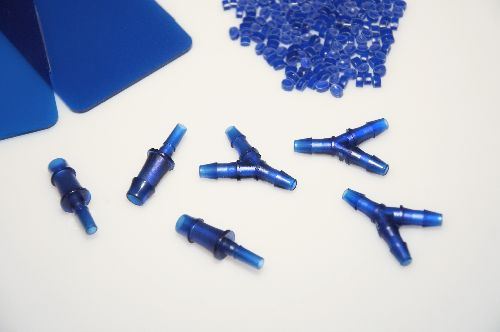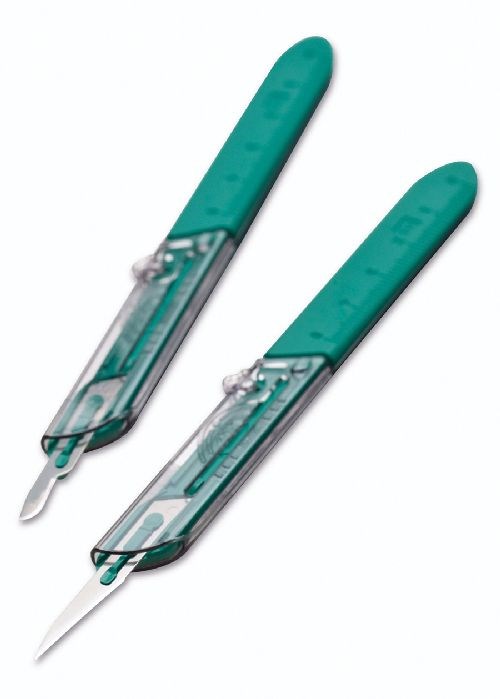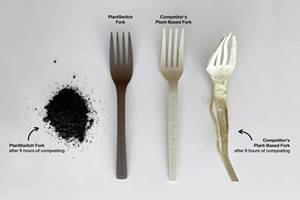'Germ Warfare’: New Materials Withstand Sterilization, Disinfectant Barrage
Medical Plastics
At recent Plastec West show, material suppliers introduced grades that can withstand more and more varied sterilizations and/or materials that utilize specialty additives to impart antimicrobial properties.
The ruler featured a sliding scale with pictograms of everyday items ranked from highest to lowest concentration of microbes/in.². A toilet seat, perhaps surprisingly, resided on the relatively low end of the germ-count scale, while a mobile phone staked out the highest level of germ intensity.
As tradeshow giveaways go, the ruler distributed in February at Plastec West in Anaheim, Calif., by Plastics Color Corp., Calumet City, Ill., was clever, though not for the squeamish, and it spoke to an increasingly important issue the medical plastics supply chain has to address.
A spike in the number and severity of hospital-acquired infections (HAI) has resulted in a corresponding rise in the frequency and strength of sterilizations and disinfectant wipe-downs within hospitals. Plastics haven’t successfully weathered the germ eradication campaign in every instance, succumbing to environmental stress cracking and even mechanical failures, forcing unwanted recalls.
In response, material suppliers have implemented a two-pronged approach: introduce grades that can withstand more and more varied sterilizations and/or materials that utilize specialty additives to impart antimicrobial properties. A number of new products were introduced at the MD&M West show that was co-located with Plastec West in Anaheim.
Timothy Workman, v.p. of business development at Plastics Color Corp. (PCC), used the ruler to promote his company’s expanded line of MicroBlok antimicrobial formulations for plastics. PCC introduced MicroBlok Z with zinc as the active ingredient, complementing the silver-based MicroBlok products. PCC says the zinc formulation is suitable for a variety of resins, including TPU, PP, and PE, in injection molding or extrusion where temperatures do not exceed 240 C (464 F). Workman noted that zinc is an antifungal that’s similar to the active ingredient in anti-dandruff shampoos. It is not a migratory additive, designed to release to the surface of a product; in theory, he said, it would remain active forever.
Evonik Industries, Parsippany, N.J., introduced Cyrolite Protect 2 in Anaheim, an acrylic-based multipolymer compound with antimicrobial agents for medical devices. Cyrolite Protect 2 uses silver to protect against microorganisms such as Staphylococcus aureus, Klebsiella pneumoniae, Pseudomonas aeruginosa, and Staphylococcus epidermidis, as tested by the JIS Z 2801 protocol. Medical connector molder Value Plastics, Fort Collins, Colo., has released a line of luer fittings for small-scale tubing connectors that use the Evonik compound.
Evonik business development manager Larry Gabriel noted that 96 hr is the longest time an IV can be inserted in a patient, and Evonik’s testing showed that 99.99% of bacteria exposed to Cyrolite Protect 2 had been killed in that time. He also stressed that the antimicrobial agent is compounded into the pellet and is not a coating or a migratory additive, giving it long-lasting performance. For Gabriel, the issue of whether or not antimicrobial compounds catch on comes down to a simple question: “Would you pay a dollar more for an antimicrobial plastic if you knew it would prevent a secondary infection?”
Sabic Innovative Plastics, Pittsfield, Mass, also markets a variety of resins with antimicrobial formulations, including Xenoy PC/polyester and Lexan PC materials, which are formulated by its LNP compounding business. Said Cathleen Hess, director of healthcare marketing, “There is a lot of activity and interest in the market around secondary contracted infections,” adding that even in the case of products utilizing antimicrobial technologies, hospitals are still cleaning medical devices. The company also released two non-antimicrobial LNP products, a carbon-fiber-reinforced polyetherimide and a carbon-fiber-reinforced polycarbonate, for surgical devices and other applications.
DISINFECTANTS GO HARCORE
It is the cleaning of devices with ever more aggressive disinfectants that has material suppliers introducing specialized grades that can withstand the chemical assault. For its part, Sabic has compiled chemical-resistance data, including an ESCR study, to help OEM manufacturers. It focused on material performance after repeated exposure to alcohol/quaternary ammonium compound (QAC) disinfectants and alcohol-free/QAC disinfectants. Particular attention was paid to whether marrying crystalline PBT polyester with PC might fare better than PC with amorphous ABS.
Along those lines, Bayer MaterialScience, Pittsburgh, released a PC/PBT blend for medical-device housings that is designed to protect better against harsh disinfectants than its PC/ABS predecessors by swapping out amorphous ABS for crystalline PBT. Bruce Fine, market segment leader for medical and consumer products, said the resulting Makroblend EL 4000 is resistant to some of the harshest chemicals in hospital use.
Makroblend EL4000, which is opaque, is also flame retardant, with a UL 94 V-0/5VA rating at 2 mm. Bayer noted that it offers toughness, reduced susceptibility to stress cracking, good flow, and high tensile modulus.
Eastman Chemical Co., Kingsport, Tenn., has positioned its proprietary Tritan copolyester as an alternative to polycarbonate, targeting chemically resistant enclosures with a new opaque grade, Tritan MXF-121. For potential applications in electronics, the new grade has a UL 94V2 rating at 1.5 mm. Helen Sirett, Eastman business manager for medical specialty plastics, noted that Tritan is inherently chemically resistant, helping it to withstand today’s cleaners. Eastman has been working with a customer on a handheld electronic device that could be released within the year.
Related Content
Prices of All Five Commodity Plastics On the Way Up
Despite earlier anticipated rollover in prices for most of the volume commodity resins, prices were generally on the way up for all going into the third month of first quarter.
Read MorePrices Up for PE, PP, PS, Flat for PVC, PET
Trajectory is generally flat-to-down for all commodity resins.
Read MoreAdvanced Biobased Materials Company PlantSwitch Gets Support for Commercialization
With participation from venture investment firm NexPoint Capital, PlantSwitch closes it $8M bridge financing round.
Read MoreLanxess and DSM Engineering Materials Venture Launched as ‘Envalior’
This new global engineering materials contender combines Lanxess’ high-performance materials business with DSM’s engineering materials business.
Read MoreRead Next
Lead the Conversation, Change the Conversation
Coverage of single-use plastics can be both misleading and demoralizing. Here are 10 tips for changing the perception of the plastics industry at your company and in your community.
Read MorePeople 4.0 – How to Get Buy-In from Your Staff for Industry 4.0 Systems
Implementing a production monitoring system as the foundation of a ‘smart factory’ is about integrating people with new technology as much as it is about integrating machines and computers. Here are tips from a company that has gone through the process.
Read More






















